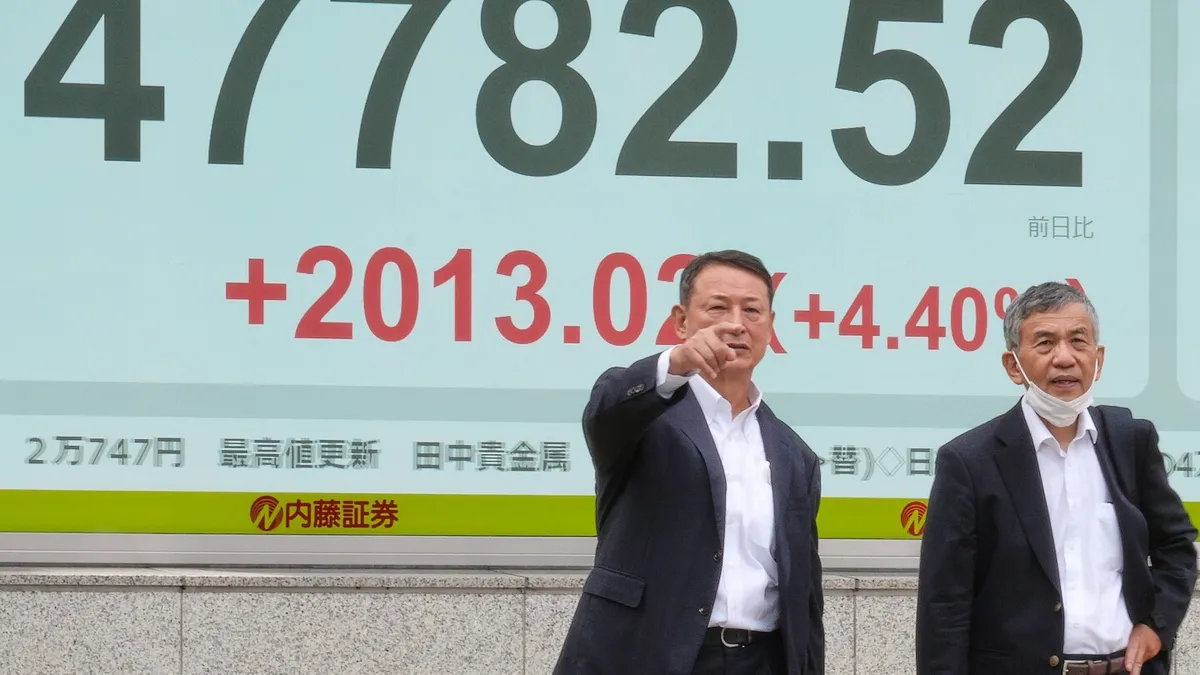
On Monday, Japan’s Nikkei stock index experienced a significant surge, jumping nearly 5% as the yen weakened. This market shift followed the ruling party's selection of an ultra-conservative leader, Sanae Takaichi, who is poised to become Japan's first woman prime minister. The decision has sparked optimism among investors, particularly non-Japanese ones, about the continuation of market-friendly policies.
The Liberal Democratic Party (LDP) elected Takaichi, a close ally of the late Prime Minister Shinzo Abe, as its new leader. At 64 years old, Takaichi has expressed admiration for former British Prime Minister Margaret Thatcher and has endorsed Abe’s ultra-conservative vision for Japan. Her ascension to the prime ministerial role seems likely, as the LDP holds the most seats in the lower house, albeit not a majority. The fragmented state of opposition groups further solidifies her position.
Despite the positive market response, Takaichi faces a myriad of challenges that have historically troubled her predecessors. According to BMI of Fitch Solutions, these include enhancing Japan’s economic competitiveness, strengthening its technological and industrial foundation, and addressing the challenges posed by an ageing and declining population alongside a substantial public debt burden. These issues will require strategic measures and innovative solutions to ensure sustainable growth.
Investor sentiment has been notably positive, as indicated by Neil Newman, head of strategy at Astris Advisory Japan. He noted that the market's upward movement was largely driven by foreign investors, reflecting confidence in Takaichi’s proposed policies. "Investors like what she has been saying," Newman remarked, highlighting the significant activity among stocks following Takaichi's election.
The announcement also had a favorable impact on Japan's automotive sector, with reports suggesting that U.S. President Donald Trump might explore options to reduce the costs associated with higher tariffs on auto parts. This speculation led to a notable increase in share prices for major automakers. Toyota Motor Corp.'s shares surged by 4.9%, while Honda Motor Co. saw a gain of 4.7%.
By mid-afternoon on Monday, the Nikkei 225 index had risen 4.7% to 47,924.52. Meanwhile, the yen depreciated against the U.S. dollar, with expectations of increased government spending likely leading to inflationary pressures. The dollar climbed to 150.31 yen from 149.33 yen, while the euro dipped slightly to $1.1723 from $1.1730.
In Australia, the S&P/ASX 200 index experienced a minor decline of 0.1%, settling at 8,976.70. Markets in mainland China, Taiwan, and South Korea remained closed for holidays. The previous Friday, U.S. stock markets had largely trended upward, contributing to record highs on Wall Street. The S&P 500 edged up by less than 0.1%, closing at 6,715.79, while the Dow Jones Industrial Average climbed 0.5% to 46,758.28. Both indices added to their all-time highs set the day prior.
The ongoing U.S. government shutdown, now in its third day, has delayed the release of crucial employment data. Typically published on the first Friday of each month, this report provides insights into job creation and the unemployment rate—key indicators for investors watching for signs of a slowing job market that could influence Federal Reserve interest rate decisions. Historically, government shutdowns have had minimal impact on the economy and stock markets, leading many to speculate that this shutdown may follow a similar trend.
Furthermore, mixed reports have emerged regarding business activity in the U.S. across various sectors, including health care and real estate. While one report from the Institute for Supply Management indicated that growth is stalling, another from S&P Global suggested that slow growth persists.
In other market news, U.S. benchmark crude oil prices increased by 99 cents, reaching $61.87 per barrel, while Brent crude rose to $65.52 per barrel. The OPEC+ alliance, composed of oil-exporting countries, agreed over the weekend to a modest increase in oil production, citing a stable global economic outlook. This decision has helped alleviate concerns about potential oversupply in the oil market.